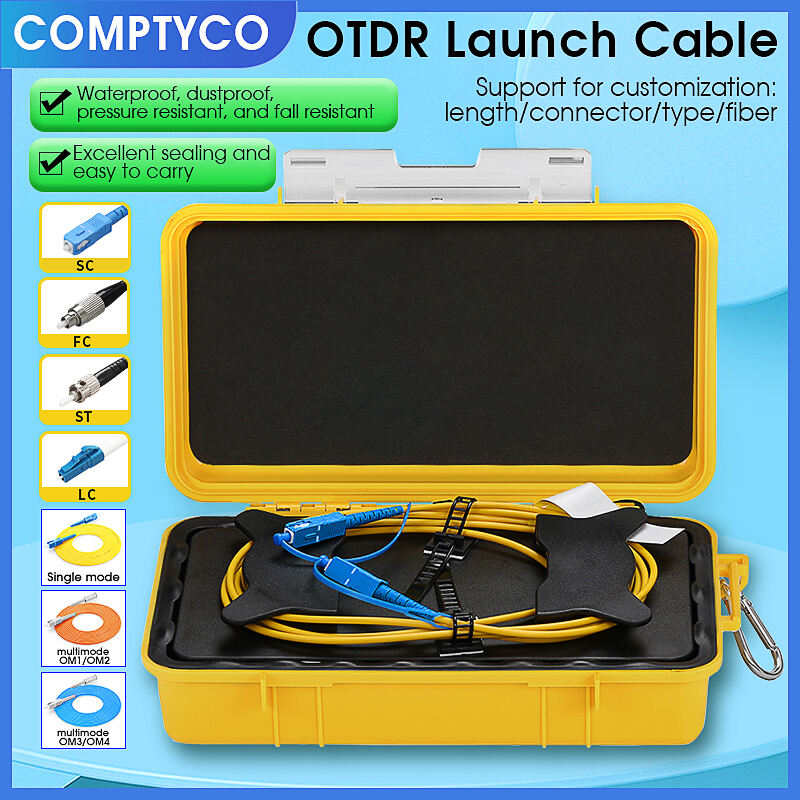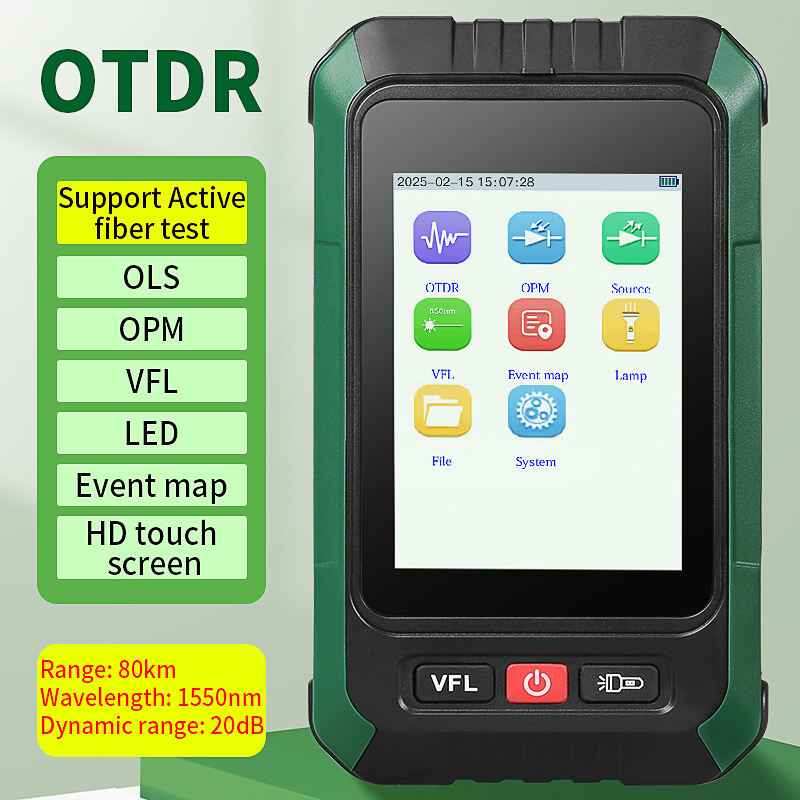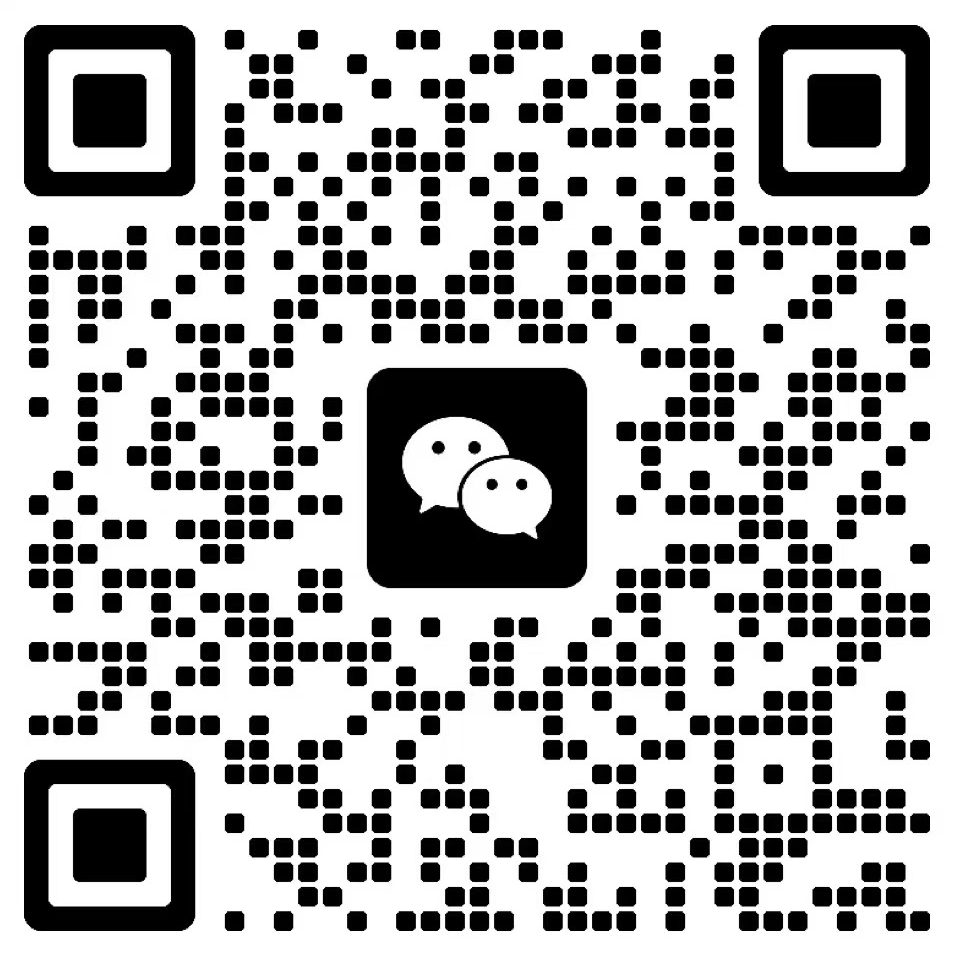What Are the Limitations of OTDR in Long-Distance Fiber Optic
Introduction to Fiber Optic Testing
Fiber optic technology has become the backbone of modern communication networks, supporting applications ranging from high-speed internet to global telecommunication systems and cloud data centers. With the expansion of long-haul fiber optic links that extend over hundreds or even thousands of kilometers, the demand for reliable testing tools has grown significantly. One of the most important instruments in this field is the OTDR, or Optical Time-Domain Reflectometer. This device has been instrumental in diagnosing faults, characterizing fibers, and certifying installations. However, despite its usefulness, the OTDR has limitations, especially when applied to long-distance fiber optic networks. Understanding these limitations is critical for network engineers, technicians, and businesses that rely on stable communication infrastructure.
How an OTDR Works in Fiber Optic Testing
Basic Principle
The OTDR operates by sending a short laser pulse into a fiber and analyzing the returning backscatter and reflections. Backscatter is caused by microscopic variations in the fiber core, while reflections occur at discontinuities such as connectors, splices, or breaks. By measuring the time and strength of these returned signals, the OTDR can estimate the distance and characteristics of each event along the fiber.
Trace Representation
The results are displayed as a trace graph, showing signal power (in dB) over distance. Peaks typically represent reflective events, while gradual declines represent fiber attenuation. Technicians interpret this trace to locate faults and evaluate fiber health.
Relevance for Long-Distance Networks
In short or medium fiber links, the OTDR works effectively, identifying issues with high accuracy. However, in long-haul networks spanning hundreds of kilometers, technical challenges arise that limit the OTDR’s effectiveness.
Limitations of OTDR in Long-Distance Fiber Optics
Signal Attenuation
One of the most significant challenges for OTDR in long-distance applications is signal attenuation. As the test pulse travels through the fiber, it loses strength due to absorption and scattering. Over very long distances, the backscattered signal returning to the OTDR becomes extremely weak, making it difficult to detect small events or subtle losses.
Dynamic Range Restrictions
The dynamic range of an OTDR refers to its ability to detect events at varying signal strengths. For long-haul fibers, the instrument requires a high dynamic range to capture distant events without being overwhelmed by near reflections. Many OTDRs have limited dynamic ranges, which restricts their ability to measure fibers beyond a few hundred kilometers accurately.

Event Dead Zones
Dead zones are regions where the OTDR cannot distinguish between two closely spaced events. In long-distance fibers, where multiple splices or connectors may exist, dead zones can hide important details. Reflective dead zones (caused by strong reflections like connectors) and non-reflective dead zones (caused by high loss events like splices) both hinder precise analysis of complex long-haul networks.
Limited Resolution at Long Distances
Resolution depends on the pulse width used during testing. Narrow pulses provide high resolution but weaken quickly, limiting measurement distance. Wider pulses extend the range but reduce resolution, making it difficult to identify closely spaced faults. In long-distance networks, technicians must compromise between resolution and range, which often reduces the detail of results.
Multiple Event Overlap
In dense long-haul systems, multiple splices, bends, and connectors may exist within short intervals. Due to limited resolution and overlapping backscatter signals, the OTDR may not differentiate between closely spaced events, leading to misinterpretation.
Chromatic and Polarization Mode Dispersion
As distances increase, effects like chromatic dispersion and polarization mode dispersion distort light signals. While these effects are not directly measured by an OTDR, they reduce the clarity of backscattered signals, making accurate measurements more challenging.
Impact of High Loss Events
Events such as poor splices or sharp bends cause significant loss. In long-distance networks, such high-loss events reduce the signal strength reaching subsequent sections, potentially masking downstream issues from the OTDR’s view.
Measurement Time
Testing long fibers requires multiple averages to improve the signal-to-noise ratio. This significantly increases measurement time. While acceptable for short fibers, in long-haul systems this can slow down maintenance operations.
Limitations in Live Network Testing
Many long-haul fibers are in continuous use for data transmission. Using an OTDR on a live system is challenging, as the test pulses may interfere with existing signals. Specialized filters can mitigate this, but they add complexity and cost.
Practical Challenges in the Field
Launch and Receive Cables
Accurately testing long fibers requires long launch and receive cables to properly view the first and last connectors. In long-haul systems, managing these cables becomes impractical.
Need for High-End Equipment
Standard OTDRs often lack the dynamic range needed for ultra-long fibers. Specialized high-performance OTDRs exist, but they are significantly more expensive and require expert operation.
Environmental Factors
Long-distance fibers often run through varied environments, from underground conduits to undersea cables. Environmental conditions can influence measurement accuracy, and OTDRs alone may not provide sufficient diagnostics in such diverse settings.
Alternatives and Complementary Tools
Optical Power Meters and Light Sources
For loss testing in long-distance networks, optical power meters combined with light sources provide accurate end-to-end attenuation measurements, complementing OTDR data.
Optical Spectrum Analyzers
These instruments measure dispersion, wavelength, and signal integrity more effectively than OTDRs in long-haul systems, helping address issues OTDRs cannot detect.
Distributed Fiber Sensing Systems
New technologies like distributed acoustic sensing and distributed temperature sensing use backscattered light differently, providing enhanced long-distance monitoring capabilities compared to traditional OTDRs.
The Future of OTDR in Long-Haul Networks
While OTDRs face limitations, ongoing technological advancements are addressing some challenges. Modern instruments now offer higher dynamic ranges, improved resolution, and automated trace interpretation. Integration with cloud systems allows real-time monitoring across geographically distant sites. Artificial intelligence and machine learning are expected to further enhance event detection and trace analysis, minimizing human error. However, even with these improvements, OTDRs will continue to function as part of a broader toolkit rather than a standalone solution for long-distance fiber optics.
Conclusion
The OTDR remains an essential tool in fiber optic testing, providing valuable insight into network health and pinpointing faults. However, in long-distance fiber optic systems, its limitations become more apparent. Issues such as signal attenuation, limited dynamic range, event dead zones, and resolution trade-offs constrain its effectiveness. Technicians must complement OTDR testing with additional instruments such as optical power meters, spectrum analyzers, and distributed sensing technologies to achieve comprehensive diagnostics. Understanding both the strengths and weaknesses of the OTDR allows network operators to apply it effectively within its capabilities, ensuring robust and reliable long-haul fiber optic communication.
FAQ
What does OTDR stand for?
It stands for Optical Time-Domain Reflectometer, a device used for testing fiber optic cables.
Why does OTDR have limitations in long-distance networks?
Because of signal attenuation, dynamic range restrictions, and resolution trade-offs, making it harder to detect and measure distant events.
What are dead zones in OTDR testing?
Dead zones are areas near strong reflective or high-loss events where smaller nearby events cannot be detected accurately.
Can OTDR measure very long fibers?
Yes, but only with high-end models that have extended dynamic ranges. Even then, resolution and accuracy may be limited.
How does signal attenuation affect OTDR measurements?
Attenuation reduces the strength of backscattered light, making distant events harder to detect in long fibers.
Are OTDRs suitable for live fiber networks?
Testing live networks is challenging as OTDR signals may interfere with traffic. Special filters are required to minimize disruptions.
What alternatives exist to OTDR for long-distance testing?
Optical power meters, optical spectrum analyzers, and distributed fiber sensing systems complement OTDR testing in long-haul applications.
How long does OTDR testing take on long fibers?
It takes longer due to the need for multiple averaging cycles to improve the signal-to-noise ratio.
Can OTDR detect dispersion issues?
No, OTDRs cannot measure chromatic or polarization mode dispersion directly; specialized instruments are needed.
Will OTDRs improve in the future?
Yes, advancements in dynamic range, resolution, AI-driven analysis, and cloud integration will enhance their performance, though limitations in long-haul systems will remain.
Table of Contents
- Introduction to Fiber Optic Testing
- How an OTDR Works in Fiber Optic Testing
- Limitations of OTDR in Long-Distance Fiber Optics
- Practical Challenges in the Field
- Alternatives and Complementary Tools
- The Future of OTDR in Long-Haul Networks
- Conclusion
-
FAQ
- What does OTDR stand for?
- Why does OTDR have limitations in long-distance networks?
- What are dead zones in OTDR testing?
- Can OTDR measure very long fibers?
- How does signal attenuation affect OTDR measurements?
- Are OTDRs suitable for live fiber networks?
- What alternatives exist to OTDR for long-distance testing?
- How long does OTDR testing take on long fibers?
- Can OTDR detect dispersion issues?
- Will OTDRs improve in the future?







